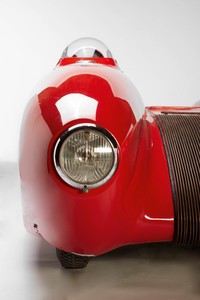
Concepts in Motion
Alison Castle reports on concept cars created by visionaries—architects, artists, amateurs—from outside the field on automotive design.
Spring 2023 Issue
Marc Newson joins restaurateur Ruth Rogers to discuss the compendium of topics he selected for a special supplement he guest-edited for the Spring 2023 issue of the Quarterly.

Marc Newson and Ruth Rogers, London, 2023. Photo: courtesy Marc Newson
Marc Newson and Ruth Rogers, London, 2023. Photo: courtesy Marc Newson
Ruth RogersMarc, you’ve been enlisted to curate a selection of features for Gagosian Quarterly. How did you go about selecting the stories you wanted to include?
Marc NewsonI wanted to keep a sense of levity throughout, avoiding anything terribly heavy-handed or academic. There’s no overarching thesis per se, it’s more a compendium of topics that I’ve been thinking about. For instance, I wanted to include a piece about my favorite film—
RREver?
MNAbsolutely. It’s just so fantastic. The film is Il Sorpasso [1962], by Dino Risi. It stars a young Vittorio Gassman and Jean-Louis Trintignant.
RROh, I love Vittorio Gassman.
MNIf you’ve not seen the film, you must. It’s one of the first road-trip films. Gassman plays this loose cannon—a real happy-go-lucky, carefree guy on the lookout for anything that might add some excitement to life. He drives a Lancia Aurelia convertible in the film, which I love. The film starts in Rome, with Gassman driving around the city, which is absolutely empty and sleepy. He’s just cruising around looking for something to do and he eventually sees a window open in an apartment. He starts throwing stones at the window and someone comes out, and it’s Jean-Louis Trintignant. He befriends this guy and somehow coaxes him out of the apartment, dragging him away on this road trip.
RRWhen did you first see the film?
MNA friend of mine was able to get me a copy of it a long time ago, but it was in the original Italian with no English subtitles. I think you can find it now with subtitles, but I’ve only ever seen it in Italian.
RRI love that era in Italian film.
MNDino Risi was a wonderful director, but he’s not that well-known outside Italy.
RRSo what else are you doing with the magazine?
MNI’ve asked my friend Alison Castle to write an essay about the history of concept cars done by artists, architects, and others coming to the automobile world from outside that industry.
RRI know that you’ve designed a car in the past—the Ford 021C concept car [1999]—and am I right in thinking that you’re working on another one with Ferrari?
MNJony [Ive] and I are partnering up with Ferrari for a series of projects. It’s going to be a long-term collaboration, part of our work with the LoveFrom collective. I’m really excited to be working again with this quintessentially Italian brand, and given that they’re so successful and publicly traded now, it’s great that they’re still producing in Italy. I’ve been working in Italy for around thirty years now.
RRHave you?
MNYeah, one of my first gigs outside of Australia was in Italy. I had some early successes there and started working with a lot of those Italian brands, like Cappellini and B&B Italia.
RRDid you live there?
MNNever. I lived in Paris at the time. I probably should have but I had personal reasons for living in France.
RRItaly is a place that I don’t think I’ll ever tire of. It’s incredible how, for instance, just going to a farm, you go down these really rural roads, and it’s dusty and it’s rocky and it’s got fields and whatever, and then you park the car and you walk into the kitchen where they’re making parmesan, and it’s like rocket science! They could be making a nuclear weapon—they’ve all got hairnets on, they’ve all got white aprons, everything is so orderly. It speaks to a real respect for their production process. There’s a sense of pride that you would not get in so many other places.
MNAnd there’s a kind of conservatism to it. It’s like Japan in that way. The two countries really share many qualities, culturally.
RRThere’s a bit of that in France as well. I’m thinking of Laguiole, the knife producers who make these incredible pieces in the same manner as when they started, in the nineteenth century.
You and I, in our respective fields, I think we strive for simplicity. Simplicity in its best form is incredibly elegant and incredibly sophisticated. And, as you know, incredibly difficult.
Marc Newson
MNFrance is a really interesting example because they’ve done an amazing job at turning their savoir faire into a marketable product. They’ve been able to engage their past in a way that is now synonymous with luxury. It’s been parlayed into a meaningful, commercial, modern thing. Whether we agree about the definition of luxury—
RRWhat do you think is luxury? I was asked that the other day.
MNMe too. What’s luxury?
RRI said, Going to a museum that’s closed [laughter].
MNThat’s such a great answer.
RRThat is the greatest luxury.
MNWow. I’ve been asked that question so many times and I always say something really boring, like “quality” or something. But to go back a little bit, that’s what I was trying to say about Ferrari: they’re one of those companies that have this savoir faire. They have their thing and their way, and they’re so intrinsically linked to Italy.
RRIn that context, it’s interesting and I imagine quite tricky to balance the dictates of the past, maintaining that control while also pursuing something in the future—an ambition that’s required for business.
MNYou’re absolutely right to point that out, and it does require an incredible amount of control. For many of these brands, like Ferrari, there’s this completely new metric based on no rather than yes. I can’t recall the exact number, but Ferrari has set a finite number of cars that they produce in a year, and they won’t do more.
RRThat reminds me of a conversation I was having with Wolfgang Puck. He came in here a few months ago and I said, “Wolfgang, I want to be like you. I want to have forty restaurants.” And he said, “Ruth, I want to be like you and have one” [laughter]. And both of us are wrong: I don’t need forty, but I don’t think he does want just one. He wouldn’t have had forty otherwise.
MNThe grass is sort of always greener—
RRYeah, you’re always thinking—
MNBut also, there’s a wonderful elegance in the control you’re able to have at this scale. Any expansion comes at a price. I’m an advocate of the one-restaurant philosophy.
RRI agree. I’d rather have the one. Somebody told me yesterday, if you go into the supermarket you can choose between twenty different types of apples or ten types of tomatoes or whatever, and people think that’s what luxury is, having choice. But in fact you’d rather have somebody select the best tomato, stock that one tomato and simplify life a bit, right?
MNFor us, definitely. I’m not sure everyone would agree, but you and I, in our respective fields, I think we strive for simplicity. Simplicity in its best form is incredibly elegant and incredibly sophisticated. And, as you know, incredibly difficult.
RRAnd difficult. I was going to say the same thing.
MNI work like a designer sometimes and I work like an artist at other times. And these are radically different ways of working—a designer has structure, rules, parameters, while an artist has virtually none of these limitations. Many people probably assume that working like an artist is easier because you don’t have a client, you can do what you want, whenever you want, however you want. But it’s the exact opposite.
RRStructure and restraint go a long way.
MNYeah, when you work within a box, you start there and you end there, and you can’t go there and you can’t—I like that structure.
RRYes, that applies to the restaurant as well. Obviously for the ingredients there’s the restraint of seasonality, their availability, the size and versatility of the kitchen itself—all of these things matter on a day-to-day basis. It’s challenging, but also what makes it worthwhile. On top of that, there are the clients themselves, with everybody coming at once so you have to perform. It’s quite theatrical.
MNIt’s very difficult for people to understand that in a way, it’s more about what you can’t have than what you can have. That’s a much more considered place to start.
RRWe used to take our whole family to this hotel on this little island off the coast of Tanzania. We would go there for what we didn’t get. You didn’t get music, you didn’t get Wi-Fi, you didn’t get tennis courts, you didn’t get nightlife—essentially, all you could do was walk the perimeter of the island. And taking those walks remains such a fond memory. I agree completely about the elegance of what you can’t have.
MNIt’s a healthy discipline to embrace, if you can.
Marc Newson’s supplement also includes: “Concepts in Motion” by Alison Castle, “Iwa Sake and Kura”, “Sketch Book” by Marc Newson, and “Il Sorpasso” by Carlos Valladares.

Marc Newson, CBE, is an industrial designer whose work spans a wide range of disciplines. Born in Sydney, Newson staged his first solo exhibition at the age of twenty-three and two years later created the now iconic Lockheed Lounge. He is the only designer represented by Gagosian, and his designs are featured in the permanent collections of more than forty institutions worldwide.
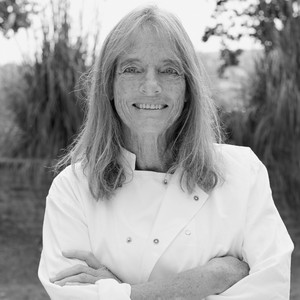
Ruth Rogers is a chef and cofounder of the iconic London restaurant the River Café. Known for her elegant and seasonal Italian cuisine, she has been instrumental in shaping the UK’s modern culinary landscape. Along with her business partner Rose Gray, Rogers has been awarded multiple accolades, including a coveted Michelin star. She has also published several cookbooks, sharing her love of Italian food and cooking techniques with home chefs. Ruth Rogers continues to be a leading figure in the world of food and a champion of sustainable and seasonal ingredients. She is also the host of the podcast “Ruth’s Table.”

Alison Castle reports on concept cars created by visionaries—architects, artists, amateurs—from outside the field on automotive design.

Carlos Valladares writes on Dino Risi’s Il Sorpasso (1962), examining the narrative structure and underlying tensions that keep viewers returning to this classic film.
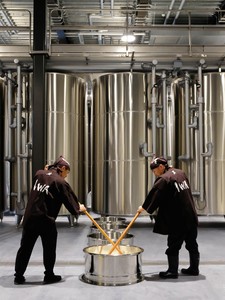
As part of the artist’s guest-edited special section for the Spring 2023 issue of the Quarterly, Marc Newson reflects with IWA Sake founder Richard Geoffroy and architect Kengo Kuma on their respective contributions to IWA Sake in Japan: bottle, brewing, and building. The sake brewery, or kura in Japanese, takes its name from its site of Shiraiwa, located in the town of Tateyama.
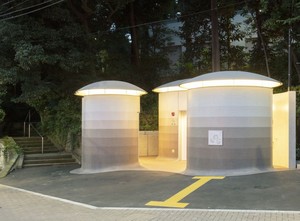
The Tokyo Toilet project has added twelve new public restrooms by renowned architects and designers to the city’s map since 2020, with five more scheduled to open in 2022. To learn more about the initiative, the Quarterly spoke with founder Koji Yanai and two of the participating designers, Toyo Ito and Marc Newson.
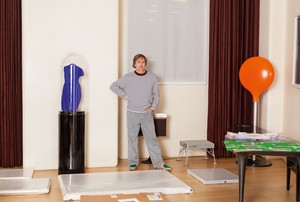
Marc Newson tells Derek Blasberg about his newest creations, explaining the backstory of these ornate works.
In this video, Marc Newson provides an overview of his latest exhibition. He details the various technical processes behind his new designs, including works in cloisonné, surfboards, swords, and large-scale glass chairs.
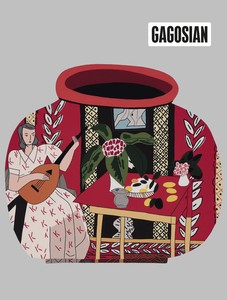
The Spring 2019 issue of Gagosian Quarterly is now available, featuring Red Pot with Lute Player #2 by Jonas Wood on its cover.
Join Brooke Holmes, professor of Classics at Princeton University, and Lissa McClure and Katarina Jerinic, executive director and collections curator, respectively, at the Woodman Family Foundation, as they discuss Francesca Woodman’s preoccupation with classical themes and archetypes, her exploration of the body as sculpture, and her engagement with allegory and metaphor in photography.
In conjunction with Marks and Whispers, at Gagosian, Rome, Oscar Murillo and Alessandro Rabottini sit down to discuss the artist’s paintings and works on paper in the exhibition, as well as how the show emphasizes the formal, political, and social dimensions of the color red in Murillo’s work of the last decade.
In this video, Gagosian presents a conversation between Jordan Wolfson and Johanna Burton, Maurice Marciano Director of the Museum of Contemporary Art, Los Angeles. The pair discuss Wolfson’s animatronic work of art Body Sculpture (2023).
Gagosian hosted a conversation between Louise Bonnet and Stefanie Hessler, director of Swiss Institute, New York, inside 30 Ghosts, the artist’s exhibition of new paintings at Gagosian, New York. The pair explores the work’s recurring themes—the cycles of life, continuity and the future, and death—and discuss how the conceptual and pictorial structures Bonnet borrows from seventeenth-century Dutch still-life painting converge to form a metaphor for hard labor, basic animal urges, and the things we often try, but fail, to hide.
In conjunction with Franz West: Papier, the gallery’s presentation of paper-based works by Franz West at Frieze Masters 2023, artist Oscar Murillo and arts writer, critic, and broadcaster Ben Luke sit down to discuss Murillo’s collaboration in selecting the works on view, as well as his personal experiences meeting the late artist in London.